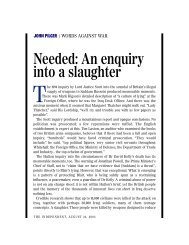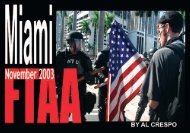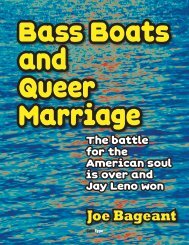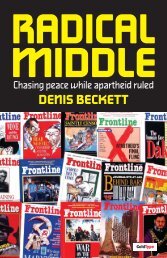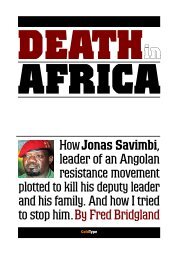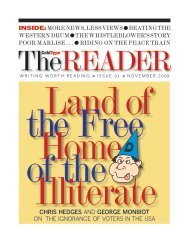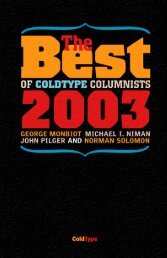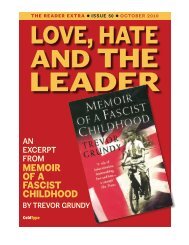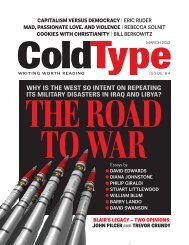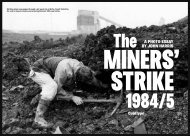UPDATED - ColdType
UPDATED - ColdType
UPDATED - ColdType
- TAGS
- updated
- coldtype
- coldtype.net
Create successful ePaper yourself
Turn your PDF publications into a flip-book with our unique Google optimized e-Paper software.
NEW YORK, APRIL 3, 2003<br />
DEATH TOLL MOUNTS AS WAR<br />
TRAGEDY INVADES NEWSROOMS<br />
Horror of war comes home as journalists become part of story<br />
t has been a week when the horror of war came home to the media – home to stay. Suddenly the<br />
war was not just another big assignment, or an adventure, or a chance to score points. Suddenly<br />
it was not a game of action and reaction, or mission and maneuver. It became a real world horror<br />
show as journalists who traditionally seek distance from the news they report became part<br />
of the story.<br />
In just three weeks, the war in Iraq (or on Iraq, if you serve many outlets in the Arab world) has<br />
already claimed more than the number of journalists killed during Gulf War I in l991. Only four jour-<br />
nalists are known to have died then.<br />
Death lurks everywhere on today’s battlefield,<br />
It can take the form of auto accident like the one<br />
that took the life of editor-columnist Michael<br />
Kelly who was overconfident that he would survive<br />
a conflict that he boosted in print. It could<br />
take the form of a friendly fire incident like the<br />
bombing of a military convoy that pulverized<br />
BBC translator Kamaran Abdurazaq Muhamed<br />
and wounded the BBC’s star correspondent John<br />
Simpson. Terry Lloyd of Britain’s ITN died in<br />
similar circumstances after being shot by “Coalition”<br />
gunfire near Basra on March 22.<br />
NBC’s David Bloom was struck down by a pulmonary<br />
embolism that could have been linked to<br />
the vehicle he created that allowed him to broadcast<br />
while barreling across the desert. The<br />
action shots of him were captivating, but he may<br />
not have paid attention to his immobilized legs,<br />
165<br />
which were attacked by a blood clot.<br />
Australian freelance cameraman Paul Moran,<br />
was on the scene of suicide bombing by people<br />
who make little distinction between embedded<br />
journalists and the armies they travel with.<br />
Kaveh Golestan, another freelance cameraman,<br />
an Iranian, was on assignment for the BBC. He<br />
stepped on a landmine.<br />
A German and a Spanish journalist were at a<br />
US base when it was rocketed by Iraqi forces.<br />
Others suffered accidents, like Gaby Rado of<br />
Britain’s Channel 4 News, while two more colleagues<br />
are missing: Fred Nerac, and translator<br />
Hussein Othman, both part of Terry Lloyd’s<br />
crew, disappeared. And there are others. A German<br />
and Spanish journalist died April 7 during<br />
an Iraqi missile attack on a US base. Gone also<br />
are Wael Awad, a Syrian reporter working for



